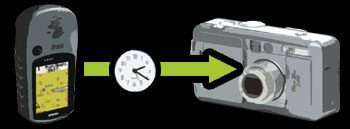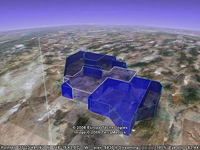
Yesterday, I made a presentation to faculty and students at my alma mater
Brandeis University in
Waltham, MA. The topics were Google Earth, Maps, KML and technical writing at Google. As expected, the audience provided a great set of questions about the technologies I described:
Question: Does Google offer educational site licenses of Google Earth Pro that would allow users to create movies?
Absolutely.
Call 1-866-755-2582 or visit earth.google.com.
Question: How can I view, track, and save changes in images of areas in Google Earth over time?
Currently, Google does not publish dates of imagery used in the product. However, if you have acquired imagery from other sources, you can place them in the 3D viewer using the
image overlay feature.
Question: How is Google Earth different than traditional CD-ROM based mapping software like DeLorme TopoUSA and National Geographic's TOPO?
Google Earth creates a realistic 3D depiction of the world using satellite images, terrain data and various vector datasets.
Question: Can Google Earth be used to depict a tree survey in a local neighborhood?
Sure. You could approach this project by using a GPS device and marking the location of each tree. Note the waypoint name and jot down the species. Upload the GPS data to
Google Earth Pro or Plus,
create a set of placemarks that show the location of the trees,
place these placemarks in a folder and
share these placemarks with others. Of course you could get fancy by creating 3D models of trees (see the
Google 3D warehouse for examples).
Question: Does anyone edit the placemarks posted in the Google Earth community?
The Google Earth Community layer (
Layers panel) depicts all placemarks currently posted in the Google Earth Community. However, the Google Earth Community showcase layer shows the best examples of postings from these boards.
Question: Where can I learn more about the James Reserve KML?
During the presentation, I displayed a great use of KML and Google Earth by Sean Askay. This KML was created as part of Sean's masters thesis at UC Riverside and addressed ecological conditions in the James Reserve in Southern California. Read more about his thesis and KML.
 As with external CSS and HTML files, you can define styles in one KML file that you reference in other KML files. For example, you can create a file called mystyles.kml that contains the following:
As with external CSS and HTML files, you can define styles in one KML file that you reference in other KML files. For example, you can create a file called mystyles.kml that contains the following:



